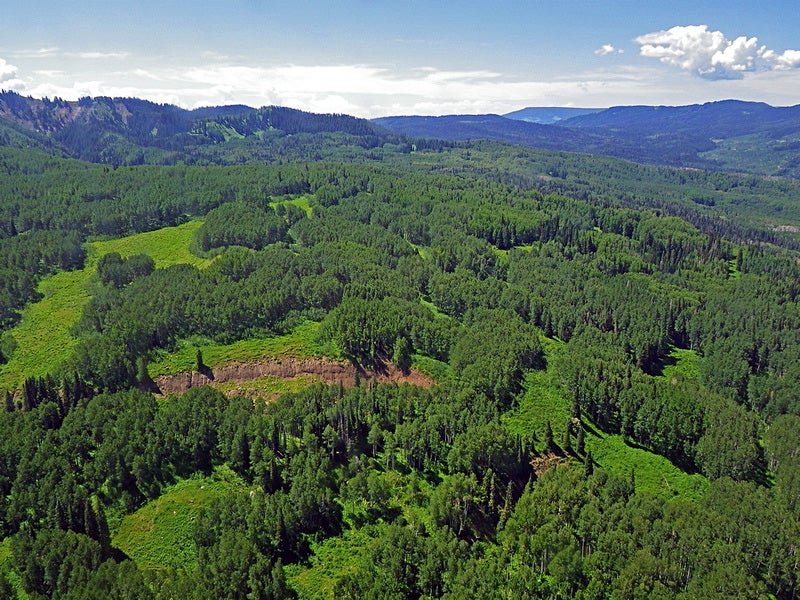BLM Cancels Illegal Leases On 33,000 Acres In The Thompson Divide
But drops protections for other White River National Forest lands
Contact
The Bureau of Land Management today finalized a plan to deal with 65 illegally issued oil and gas leases within the treasured White River National Forest in western Colorado. The plan cancels 25 leases in the Thompson Divide covering 33,000 acres of that broader area, but it rolls back protections that BLM had proposed to apply to other leases in the area.
The illegally issued leases in the White River National Forest have been a source of controversy for more than a decade.
“We support BLM’s cancellation of 25 leases inside the Thompson Divide,” said Peter Hart, staff attorney at Wilderness Workshop. “But based on our initial review, the agency has abandoned its earlier proposal to protect the East Willow, Mamm Peak and Battlement Mesa areas. Much of Thompson Divide’s value is tied to the integrity of the surrounding landscape. BLM can’t just sweep those lands under the rug.”
The illegally issued leases have been a source of controversy for more than a decade. Oil and gas drilling threatens important wildlife habitat, pristine roadless lands, public water supplies and the Thompson Divide. Public commenters overwhelming called for BLM to cancel all of the illegal leases. In fact, more than 99 percent of the public who commented in this review process—almost 100,000 people—asked the agency to protect all of the illegally leased lands.
Local, regional and national groups representing wildlife, sportsman, and environmental interests supported part of BLM’s decision, the cancellation of 25 leases in the Thompson Divide. But they rebuked the agency for the other half of its decision, which fails to protect the East Willow, Mamm Peak and Battlement Mesa areas of the forest. Together, all of the areas that were illegally leased are part of a single functioning landscape supporting wildlife across the region.
BLM’s draft Environmental Impact Statement, issued in November 2015, would have added numerous protections for the East Willow, Mamm Peak and Battlement Mesa areas. Those protections were adopted by the U.S. Forest Service in its management plan for the White River National Forest and considered the “minimum necessary” to protect the natural resources in those areas. BLM’s new decision fails to apply those necessary protections to dozens of the illegal leases.
“Now more than ever, we need to preserve our treasured lands for future generations,” said Mike Freeman, Earthjustice attorney who represents Wilderness Workshop in its campaign to protect the White River National Forest lands. “The Obama administration took a critical step in protecting much of the Thompson Divide, but it should have finished the job by not dropping proposed protections for the East Willow, Mamm Peak and Battlement Mesa areas.”
The following are statements from organizations that have long been engaged in the effort to protect the White River National Forest:
“While it’s wonderful that this will protect certain areas, this plan would also bring oil and gas development into one of America’s last remaining wild places,” said Amy Mall, senior policy analyst at the Natural Resources Defense Council. “This forest provides prime habitat for wildlife, unspoiled roadless lands, and drinking water for millions of people. The federal government should be protecting America’s national forests, not selling them to the highest bidder.”
“The Bureau of Land Management took a crucial step by canceling 25 illegally issued oil and gas leases in the Thompson Divide, but it shouldn’t have stopped there. Important fish and wildlife habitat will be affected by development of the remaining leases, including winter range for elk and mule deer, elk production areas, as well as vital range for bighorn sheep, moose, black bear and lynx,” said Kate Zimmerman, the National Wildlife Federation’s public lands policy director.
“The BLM is on the right side of history by cancelling some of the illegal leases on the Thompson Divide,” said Scott Miller, senior regional director for the Southwest Region of the Wilderness Society. “But it needs to go further to protect one of Colorado’s crown jewels. These illegal leases should have never been issued in the first place. Now we are seeing the potential for oil and gas leasing in the White River National Forest, which is one of the most visited national forests in the country. There is room for both energy development and conservation on our public lands, but all lands are not appropriate for leasing. There needs to be consideration for conservation before leasing happens.”
“Municipal water resources in the Garfield County seem to be under siege,” said Rifle resident and Western Colorado Congress member Leslie Robinson. “Any community that depends on the Colorado River and its tributaries for drinking water is at risk as more drilling is approved in our watersheds. Residents of Rifle, Silt, Battlement Mesa, and Parachute find it problematic that the BLM may validate dozens of leases in our watersheds without even the minimum protections. The agency owes residents proper protection. ”

Additional Resources
About Earthjustice
Earthjustice is the premier nonprofit environmental law organization. We wield the power of law and the strength of partnership to protect people's health, to preserve magnificent places and wildlife, to advance clean energy, and to combat climate change. We are here because the earth needs a good lawyer.